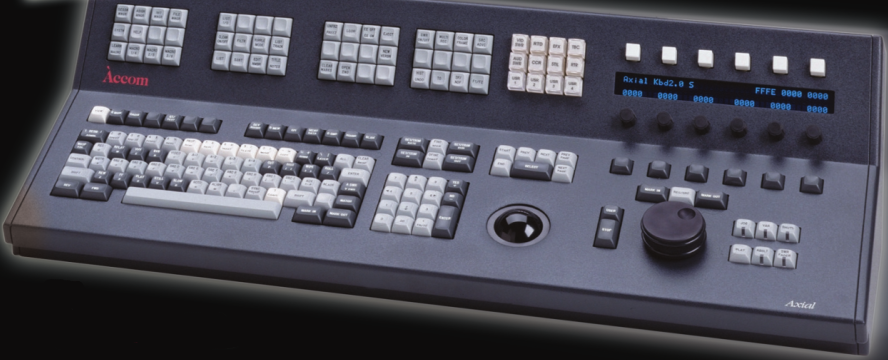# Origin
This is part of a console for a film/tv editing system. This is just the control panel; the actual brains of the thing, including the interfaces to the rest of the production equipment, reside in two separate rack-mounted chassis (yup, that's plural), which I don't have. Not that it matters; those cost several times as much as the control panel itself, which is already plenty expensive. Besides, I don't plan to use it for film production anyway, although back in the day I used to work with ones just like this.
The manufacturer, Accom, folded in late 2005. Their web site is now defunct, and their documentation is not that easy to come by since the archive does not include their FTP site. I have since found that support continued under the Abekas name, which was eventually acquired by Canada-based Ross Video. I have reached out to current and former staff at these companies, contacts listed as international distributors, and repair centres around the world -- in the hope that someone, somewhere, has kept some of the old paperwork around and is willing to share. So far, no luck. This means I'll have to reverse engineer it.
## Physical appearance
The control panel is fairly hefty: The thing weighs around 7.7kg, is 78cm wide, 16cm tall, and 32cm deep.

In total, there are 189 buttons, 23 of which are individually lightable. The majority of the keys are, according to keyboard enthusiast Chyrosran22, Cherry MX Black switches topped by DSA-style Cherry M8 key caps, which are in three shades of grey with lettering that is engraved and painted. Of the lighted buttons, 18 use specialty switches of frankly underwhelming feel and caps with replaceable labels.
All of this is arranged into a full qwerty layout, a combined numeric/navigation block, five banks of 12 keys each, other minor clusters, and a 2x40 character VFD display with a blue-on-black colour scheme surrounded by six sets of lighted switches, dial knobs, and keys. There's also a large trackball (although with no mouse buttons nearby), and a solid-metal jog wheel.
On the back there is a 6-pin XLR socket for power and a DE-9 socket for the RS-422 serial connection to the comms chassis. On the inside, there is plenty of space to hold any additional modern electronics necessary to revive or repurpose this thing.
 noughtnaut
noughtnaut
Discussions
Become a Hackaday.io Member
Create an account to leave a comment. Already have an account? Log In.